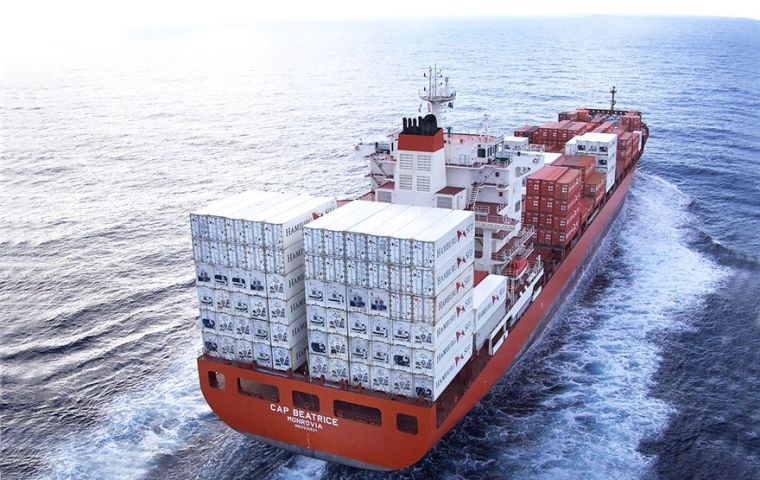MercoPress. South Atlantic News Agency
.Bearish market for commodities and protectionism impact on Latin American exports
 The export contraction was due to a fall in sales to the United States (-5%) and to the region itself (-11%), which together explained three quarters of the total
The export contraction was due to a fall in sales to the United States (-5%) and to the region itself (-11%), which together explained three quarters of the total  “A demand acceleration, particularly in the US and China could sustain exports, but resurgence of trade protectionism threatens the forecast”, Paolo Giordano said
“A demand acceleration, particularly in the US and China could sustain exports, but resurgence of trade protectionism threatens the forecast”, Paolo Giordano said Latin American and Caribbean exports are expected to fall approximately US$50 billion, or 6%, in 2016, a lower contraction rate than the 15% observed in 2015. This relative improvement was mainly due to a rebound of commodity prices, according to a report conducted by the Inter-American Development Bank (IDB) using detailed data for 24 countries in the region. The value of total exports should reach US$850 billion in 2016.
The annual report “Trade and Trend Estimates, Latin America and the Caribbean” argues that export volumes did not display sufficiently high growth rates to give a significant boost to the region’s export performance, which registered a contraction for the fourth consecutive year.
The export contraction was due primarily to a fall in sales to the United States (-5%) and to the region itself (-11%), which together explained three quarters of the total, and, to a lesser extent, to China ( 5%), the rest of Asia, and the European Union (-4% each).
“An acceleration of demand, particularly in the United States and in China, could sustain exports, but the resurgence of trade protectionism could bias the forecast”, stated Paolo Giordano, Principal Economist of the Integration and Trade Sector and the report’s coordinator.
The main factor driving the region’s export performance was the fall in commodity prices. Although the deflationary trend has been easing since the beginning of 2016, when signs of recovery were first observed, prices have not yet reached the levels displayed prior to their collapse at the end of 2014, with the exception of sugar and gold.
At the sub regional level, the report shows that the export decline was most noticeably in South America, while it remained relatively stable in Mexico and in some countries of Central America and the Caribbean. The more measured contraction for the regional aggregate was mainly due to the performance of South American exports, which benefited from the stabilization of commodity prices. In contrast, in South America and in Mesoamerica, manufactures exports did not support a stronger recovery due to lower demand from within the region, and from the United States with regard to Mexican exports.
The prospects for a reversal of the downward trend in 2017 are associated with a scenario in which commodity prices continue to improve, and intraregional trade recovers. Those countries whose real exchange rates have depreciated could also harness greater price competitiveness to stimulate manufactures sales and diversify their export basket.




Top Comments
Disclaimer & comment rulesCommenting for this story is now closed.
If you have a Facebook account, become a fan and comment on our Facebook Page!